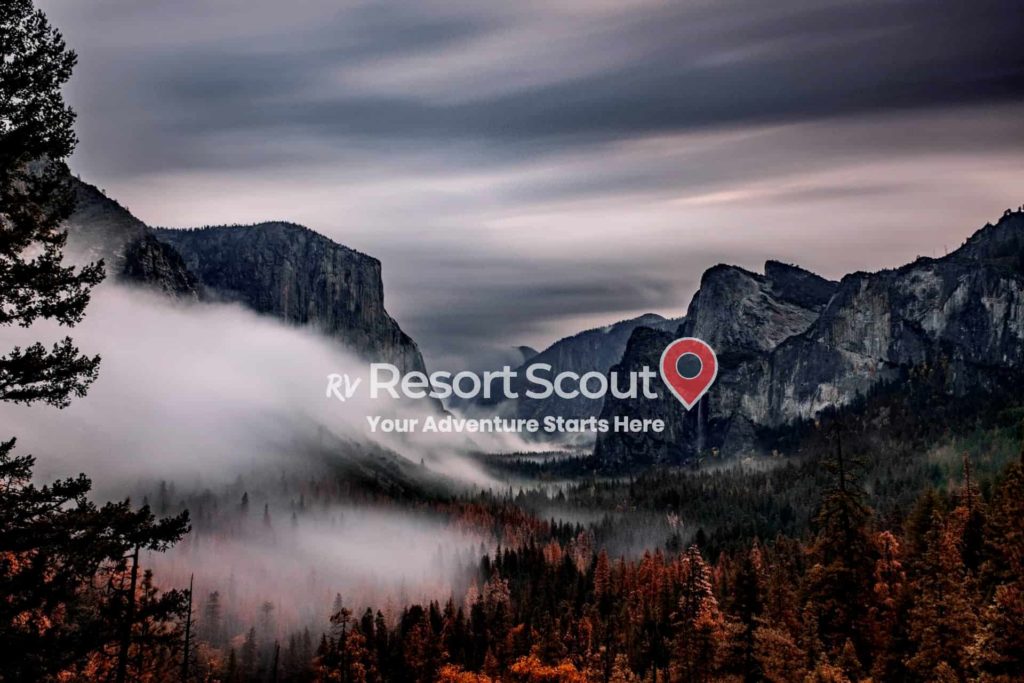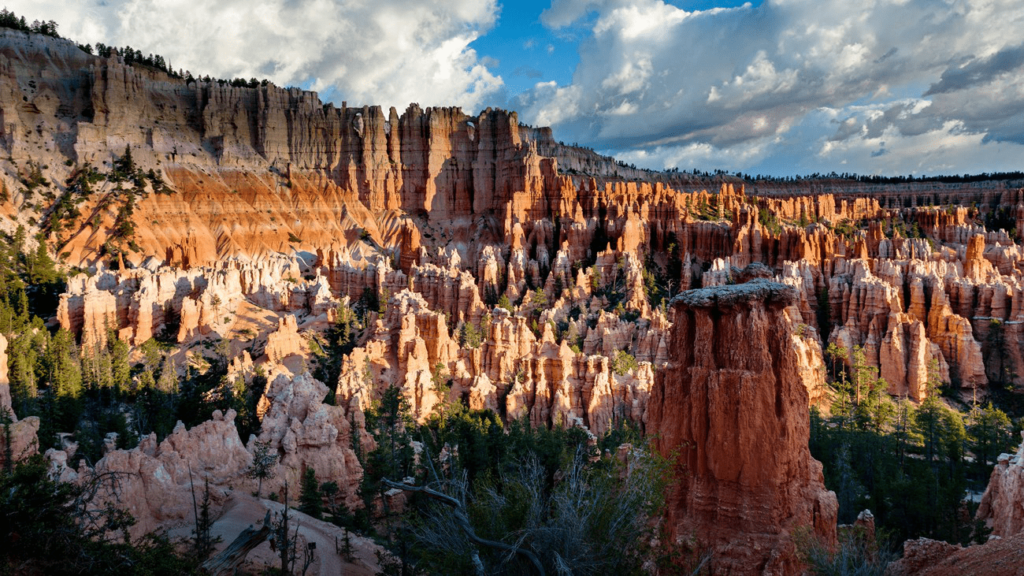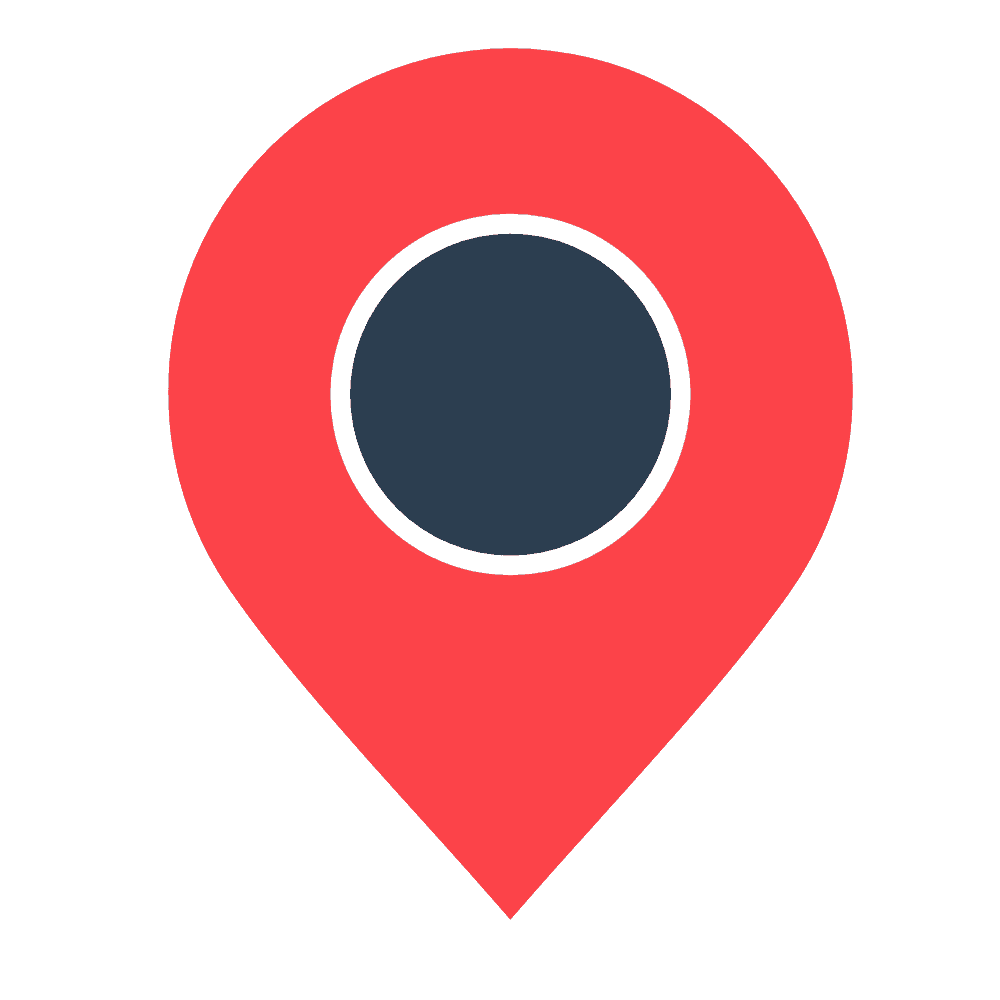The Ultimate Guide: Bryce Canyon National Park Utah

Bryce Canyon National Park is a unique and breathtaking destination located in southern Utah, USA. Known for its colorful hoodoos (tall, thin spires of rock), the park offers a variety of outdoor activities such as hiking, camping, and sightseeing. Visitors can explore the park’s various trail systems, including the popular Navajo Loop and Queen’s Garden, to get up close and personal with the hoodoos and other geological formations. The park also offers a range of educational programs, including ranger-led tours, to help visitors understand and appreciate the natural history of the area. With its stunning red rock landscapes and wide range of recreational opportunities, Bryce Canyon is a must-see destination for nature lovers and outdoor enthusiasts.
For a condensed view of the park feel free to check out rvResortScouts Bryce Canyon National Park Information listing.
Park History / General Overview
The history of Bryce Canyon dates back thousands of years. There is evidence of human habitation in the area dating back to the Puebloans and Fremont cultures. The Paiute tribe also has a long history in the area, and their stories and legends about the hoodoos and other features of the park are an important part of the park’s cultural history.
The park itself, however, has a relatively short history as a protected area. The first homesteaders arrived in the area in the late 1800s. But it wasn’t until 1903, when naturalist and photographer, Isaac Behunin, built a cabin and started promoting the area as a tourist destination. That’s when people began to take notice of the area’s unique geological features. In 1923, the National Park Service was created and in 1924 the area was designated as a National Monument. In 1928, it was officially made into Bryce Canyon National Park Utah.
The park’s main feature is the Bryce Amphitheater. The amphitheater is a large natural amphitheater that is filled with hoodoos. Claron limestone composes the hoodoos, which range in color from orange to red. The park also has a variety of other geological features, such as arches, fins, and natural bridges, as well as several natural arches and hoodoos.
The park’s wildlife is diverse and includes a variety of mammals, birds, and reptiles. Some of the most common animals in the park are mule deer, bighorn sheep, and elk. The park is also home to a variety of birds, such as the American kestrel and the white-throated Swift.
Getting Oriented Within Bryce Canyon National Park Utah
Bryce Canyon is divided into two main areas: the main park and the northern section. The main park is where you will find the park’s main visitor center. Here you will also find the majority of the park’s hiking trails, and the famous hoodoos. This is the most developed part of the park. It is also home to the majority of the park’s amenities and facilities.
The main park is home to several hiking trails that range in difficulty from easy to strenuous. Some of the most popular trails in the main park include the Bristlecone Loop, the Navajo Loop, and the Peek-A-Boo Loop. These trails take you through a variety of landscapes, including forests, canyons, and overlooks, and offer great views of the park’s hoodoos and other geological features.
The main park is also home to several overlooks. You can stop and take in the views of the park at these designated areas. Some of the most popular overlooks in the main park include Sunset Point, Sunrise Point, and Inspiration Point. These overlooks offer spectacular views of the park’s hoodoos and the surrounding landscape.
The northern section of Bryce Canyon National Park is less developed. It is home to more primitive trails and backcountry camping sites. This area is more remote and offers a more wilderness-like experience. The trails in the northern section are less crowded. Because of this they offer a chance to explore more remote areas of the park. Some of the trails in the northern section include the Fairyland Loop and the Riggs Spring Loop. These trails are longer and more strenuous. They take you through a variety of landscapes and past some of the park’s most beautiful hoodoos.
Essentials of Bryce Canyon National Park
There are several essential things to know before visiting Bryce Canyon. The first is how to get there. Bryce Canyon is located in southwestern Utah, about 50 miles from Cedar City. The nearest airports are in Las Vegas, Nevada and Salt Lake City, Utah. From there, you can rent a car or take a shuttle to the park. It is also possible to drive to the park from several nearby cities, such as St. George, Utah and Flagstaff, Arizona.
Once you arrive at Bryce Canyon National Park, it is a good idea to stop by the visitor center. While you’re there, you should get a map and learn about the park’s history and attractions. The visitor center is located in the main park and is open year-round. It has exhibits on the park’s geology, wildlife, and history, as well as a gift shop and restrooms.
There are also several facilities and amenities in the park, such as campgrounds, lodges, and restaurants. The park has three developed campgrounds that have restrooms, running water, and picnic tables. There are also several lodges and cabins located outside the park that offer more amenities. There are several restaurants in the park and surrounding area, ranging from fast food to sit-down dining.
In addition to the facilities and amenities, there are also rules and regulations in place to protect the natural environment and ensure the safety of visitors. It is important to follow these rules and regulations. Not doing so can result in fines or other penalties. Some of the park’s rules and regulations include staying on designated trails, not feeding the wildlife, and not littering.
Things You Need to Know
When visiting Bryce Canyon National Park, there are several things that you should know to ensure that you have a safe and enjoyable experience. Here is a list of some of the most important things to keep in mind:
- High Altitude: The park is located at a high altitude with the highest elevation being 9,115 feet. This means that the air is thinner, and it can be harder to breathe. This can cause altitude sickness in some people. Drink lots of water to combat the altitude sickness.
- Dry Climate: The park is located in a dry climate. This means that it can be hot and sunny, especially in the summer months. It is important to wear sunscreen, a hat, and bring plenty of water to stay hydrated.
- Crowds: The park is very busy during the summer months. Because of this, it is a good idea to arrive early in the morning or later in the afternoon to avoid the crowds.
- Park Rules and Regulations: There are strict rules and regulations in place to protect the natural environment and ensure the safety of visitors. It is important to follow these rules and regulations for your safety.
- Weather: The weather can change quickly at Bryce Canyon National Park. This is particularly true during the summer months when thunderstorms can roll in quickly. Be sure to check the forecast before your visit, and be prepared for varying conditions. It is also important to be aware of lightning safety in the park.
- Wildlife: The park is home to a variety of wildlife such as deer, elk, bighorn sheep and more. It’s important to follow rules and regulations such as not feeding the wildlife, and keeping a safe distance from wild animals.
Best Hikes
Experience the park’s unique hoodoos and other geological features up close by hiking on the stunning trails of Bryce Canyon National Park, which is known for its scenic hiking trails.
Here are five of the best hikes in the park that you won’t want to miss:
- The Queen’s Garden/Navajo Loop: This popular hike is a combination of two trails and takes you through a variety of landscapes, including forests, canyons, and overlooks. Along the way, you’ll see some of the park’s most famous hoodoos, including Thor’s Hammer, Queen Victoria, and the Wall of Windows. The hike is about 1.8 miles long and moderate difficulty.
- The Peek-a-Boo Loop: This hike is a little longer than the Queen’s Garden/Navajo Loop, at about 5 miles, but it is considered to be easier. The trail takes you through a beautiful forest and past several hoodoos, including the iconic Peek-a-Boo hoodoo. You might even catch a glimpse of some wildlife.
- The Fairyland Loop: This longer hike, 8 miles, is considered to be more strenuous, but it is also one of the most beautiful and remote trails in the park. The trail takes you through a variety of landscapes, including forests, canyons, and overlooks, and past some of the park’s most spectacular hoodoos.
- The Rim Trail: This hike follows the rim of the Bryce Amphitheater and offers fantastic views of the park’s hoodoos and the surrounding landscape. It is about 11 miles long, and runs between Fairyland Point and Bryce Point. The hike is on the easier side and gives you the opportunity to see the hoodoos.
- The Riggs Spring Loop: This hike is located in the northern section of the park and is considered to be more strenuous. It’s an 8-mile loop that takes you through a remote wilderness area. The hike offers great views of the park’s hoodoos and other geological features. The hike also takes you to Riggs Spring. This is the park’s only permanent spring, and through the Riggs Spring meadow, home to a variety of wildflowers in the summer months.

Accommodations at Bryce Canyon National Park
Bryce Canyon offers a variety of accommodations for visitors, including campgrounds, lodges, and cabins. Here is an overview of the options available:
- Campgrounds: The park has three developed campgrounds that offer restrooms, running water, and picnic tables. The North Campground, Sunset Campground, and the Bryce Canyon Campground are open year-round on a first-come, first-served basis. These campgrounds also take reservations for peak season. The campgrounds offer a great way to experience the park and its natural surroundings.
- Lodges: Bryce Canyon Lodge is the only lodging option within the park boundaries. The lodge offers a range of accommodations, including hotel rooms and cabins. The Lodge is open seasonally, from late spring to early fall. It is a great option for visitors who want to experience the park in comfort.
- Cabins: Bryce Canyon Lodge also offers cabin accommodations. They are a great option for visitors who want to experience the park in comfort while being close to nature. The cabins have electricity, heat and private bathrooms, and are available in different sizes to accommodate different group sizes.
- Backcountry Camping: If you are looking for a more rugged outdoor experience, Bryce Canyon National Park also offers backcountry camping. Backcountry camping requires a backcountry permit and is a great option for visitors who want to experience the park’s remote wilderness areas. Camp in designated campsites only, and strictly adhere to Leave No Trace principles when camping in this style. Backpackers and hikers must pack out all trash, human waste, and food scraps. Prohibit campfires and store all food in approved bear-resistant containers. Make sure to have the proper gear while camping in the backcountry. It is also advisable to let someone know of your itinerary before starting a trip.
Safety
Visiting Bryce Canyon National Park can be a safe and enjoyable experience, as long as visitors take the necessary precautions and follow park rules and regulations. Here are a few important safety tips to keep in mind when visiting the park:
- Weather: The weather at Bryce Canyon can change quickly, especially during the summer months when thunderstorms are common. Check the forecast before your visit and be prepared for varying conditions. Lightening is also common in the park.
- Hiking: Bryce Canyon has a variety of hiking trails for different levels of ability. Be sure to check trail difficulty before you start and be aware of your own capabilities. Make sure to carry enough water, wear proper footwear, and bring a trail map.
- Altitude: As mentioned before, Bryce Canyon National Park is located at a high altitude, which means that the air is thinner, and it can be harder to breathe. Drink plenty of water and take it easy if you are not used to being at high altitudes.
- Hydration: The park is located in a dry climate, so it is important to drink plenty of water to stay hydrated. Be sure to bring enough water with you when hiking and bring additional water if you plan to be in the park for an extended period of time.
- Wildlife: The park is home to a variety of wildlife, including mule deer, elk, bighorn sheep, and more. It is important to respect the animals and keep a safe distance from them.
- Emergency Services: In case of emergency, contact a park ranger immediately or dial 911.
By following these safety tips, you can help ensure that your visit to Bryce Canyon National Park is safe and enjoyable.
What’s in the Surronding Area?
Bryce Canyon is located in southwestern Utah, and there are many other exciting things to see and do in the surrounding area. Here are a few highlights:
- Zion National Park: This park is located about two hours south of Bryce Canyon, and it offers a wide range of outdoor activities, including hiking, rock climbing, and backpacking. Zion is known for its towering sandstone cliffs, beautiful canyons, and scenic drive through the Zion-Mt. Carmel Tunnel.
- Cedar Breaks National Monument: This park is located about an hour east of Bryce Canyon, and it features a natural amphitheater, hiking trails and a visitor center that offers interpretive programs and guided walks during summer.
- Grand Staircase-Escalante National Monument: This monument is located about an hour east of Bryce Canyon and offers excellent opportunities for backpacking, hiking, and exploring remote wilderness areas. The monument contains a rich variety of geological formations and is home to several rare species.
- Kodachrome Basin State Park: This park is located about an hour east of Bryce Canyon and offers visitors the chance to explore a unique landscape of colorful sandstone spires and formations. The park has several campgrounds, picnic areas and hiking trails that will allow visitors to take in the stunning scenery.
- Brian Head Ski Resort: Located about 1.5 hours east of Bryce Canyon. Is a great option for winter activities like skiing, snowboarding and snowshoeing, as well as during summer for mountain biking and hiking.
- Coral Pink Sand Dunes State Park: located about 1.5 hours west of Bryce Canyon, this park features a unique landscape of red sand dunes, and is a great option for off-roading and ATV riding.
These are just a few of the many exciting things to see and do in the surrounding area of Bryce Canyon.
Wrap Up on Bryce Canyon National Park Utah
Bryce Canyon is a beautiful and unique destination that offers something for everyone. Whether you want to hike through the park’s stunning landscapes, take a scenic drive, or just relax and enjoy the views, Bryce Canyon has something to offer. With its high altitude, dry climate, and strict rules and regulations, it’s important to plan ahead and be prepared for your visit. But with the right planning and preparation, Bryce Canyon National Park is a place that will leave you with a lifetime of memories.


